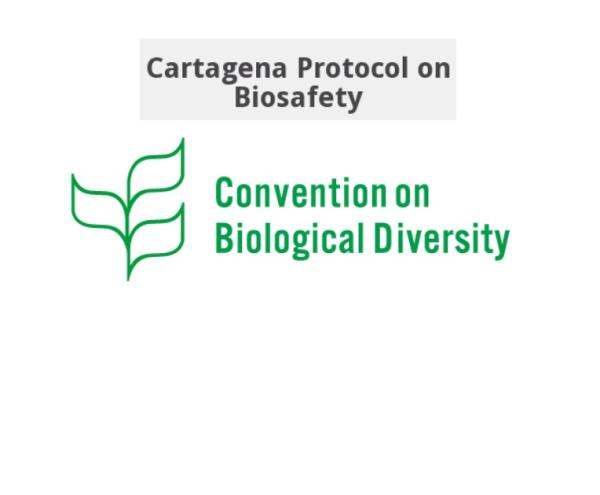
To celebrate the 15th anniversary of the entry into force of the Cartagena Protocol on Biosafety, the Secretariat of the Convention on Biodiversity (CBD), part of UN Environment, asked for articles on key issues of the Protocol, an international agreement which aims to ensure the safe handling, transport and use of living modified organisms (LMOs) resulting from modern biotechnology. We have submitted the article below, applauding CPB for approving GM crops in several developing countries and highlighting the economic, environmental and health benefits that have resulted.
***
As the Cartagena Protocol on Biosafety (CPB) entered into force in 2003, genetically modified (GM) crops were a mere half-dozen years old, adopted in 18 countries. Adoption of GM crops rose to 29 countries by 2010, dropping 24 in 2018, as four newly ascended European Union (EU) countries and Germany were forced to discontinue growing GM crops to comply with the EU ban.
GM crop adoption has been facilitated in developing countries through the development of biosafety frameworks, allowing for thorough risk assessments to be completed. Implementing biosafety frameworks has provided domestic regulators with the opportunity to ensure that the scientific principles of risk assessment as defined by the Organisation for Economic Cooperation and Development are met, as well as any additional socio-economic considerations (SECs).
Significant benefits from GM crops have come in the domain of socio-economics. Recent examples include:
- Female small landholders spent an average of three fewer weeks hand-weeding their fields. The time saving was spent hauling more water to their personal vegetable gardens and with their children. (Gouse, 2013)
- Farmer suicides in India leveled-off or decreased in most cotton-producing regions following the commercialization of Bt cotton. (Gruère and Sengupta, 2011)
- Significant spillover benefits occurred in China, where insecticide applications in non-Bt cotton fields dropped from in excess of 40kg/ha to less than 10kg/ha. (Huang et al., 2010)
- The adoption of Bt cotton in India results in up to 9 million fewer cases of pesticide poisoning per year. (Kouser and Qaim, 2011)
- GM corn contains 30% fewer cancer related mycotoxins, than conventional or organic corn. (Pellegrino et al., 2018)
The quantification of human health benefits helps to explain the popularity of GM crops with developing countries farmers, particularly cotton farmers. Especially given that farmers have extensive communication networks and share their GM crop production experiences with neighboring farmers.
The inclusion of SECs in biosafety frameworks as allowed under the CPB, has allowed research to be conducted that quantifies socio-economic benefits. The quantification and publication of evidence of socio-economic benefits has encouraged other countries to move more rapidly towards making domestic biosafety frameworks operational. Countries such as Nigeria, Bangladesh and Sudan have recently commercialized GM crops and initial reports indicate that demand is strong for these innovations. Socio-economics has allowed for the verification of some of the most significant benefits resulting from GM crop adoption.
References:
Gouse, M. 2013. An evaluation of the gender differentiated impact of genetically modified crop adoption: A pilot study in South Africa - GM maize and gender: Evidence from smallholder farmers in KwaZulu-Natal, South Africa. Project report to the Program for Biosafety Systems, International Food Policy Research Institute.
Gruère, G. and D. Sengupta. 2011. Bt cotton and farmer suicides in India: An evidence-based assessment. Journal of Development Studies 47: 2: 316-337.
Huang, J., J. Mi, H. Lin, Z. Wang, R. Chen, R. Hu, S. Rozelle and C. Pray. 2010. A decade of Bt cotton in Chinese fields: Assessing the direct effects and indirect externalities of Bt cotton adoption in China. Science China: Life Sciences 53: 8: 981-991.
Kouser, S. and M. Qaim. 2011. Impact of Bt cotton on pesticide poisoning in smallholder agriculture: A panel data analysis. Ecological Economics 70: 2105-2113.
Pellegrino, E., S. Bedini, M. Nuti and L. Ercoli. 2018. Impact of genetically engineered maize on agronomic, environmental and toxicological traits: a meta-analysis of 21 years of field data. Nature Scientific Reports 8: 3113: 1-12.



